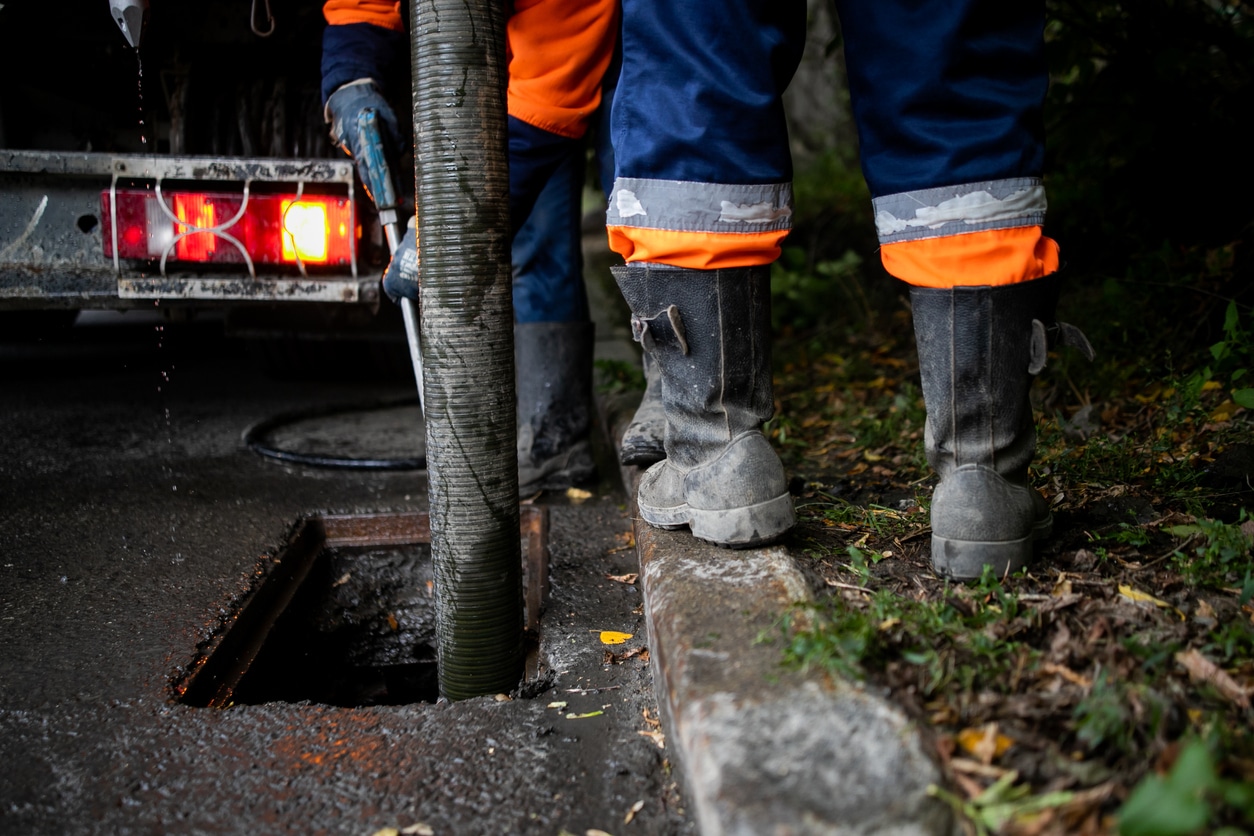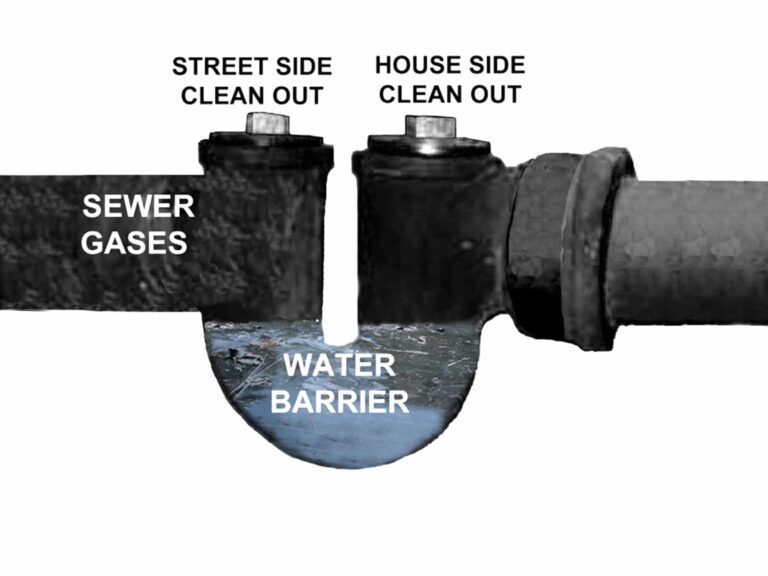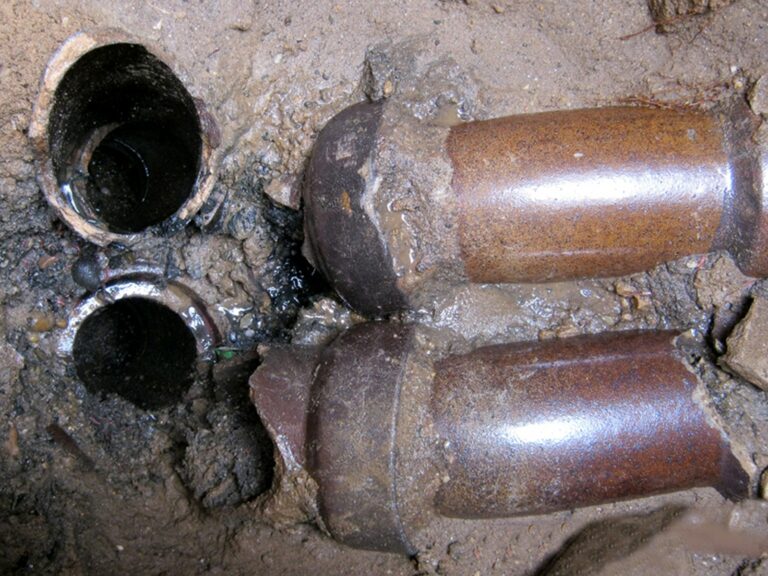Storm drains are essential infrastructure for the population’s safety. A poorly managed storm drainage system is not only a menace that threatens your property, but also the surrounding environment. In residential properties, storm drains help divert excess water that runs from buildings and hard surfaces and direct it to the city’s stormwater drain system.
There are some instances where your storm drain may require storm drain traps, and others do not. We’ll help you learn about your drain system and when you need a storm drain trap installed in your storm drain system.
Making Something Seemingly Complicated Simple: A 4-Point Guide About Storm Drain Traps
Before we explain storm drain traps, we’ll explain a bit about storm drains themselves. Then you can better understand when a storm drain trap is required, why it is required, and why it is different than other drain system traps.
1. What is a Storm Drain?
A storm drain, also referred to as a storm sewer, a stormwater drain, or a surface water drain, is an infrastructure that’s designed to drain excess ground and rainwater from different areas on your property. This includes water from sidewalks, paved streets, parking lots, and roofs. Homes, businesses, or the city’s drainage system pipes can also use storm drains.
Storm water drains on private properties collect water from the house’s storm gutters. The water can channel into a larger city storm drainage system. Stormwater drains don’t handle wastewater, so most property owners often overlook them. However, a storm drain is vital as it protects you and your property. Here are the reasons why you need a stormwater drain on your property:
- Reduce the risk of your property flooding from excessive rainfall and inadequate drainage
- Minimize the spread of debris and contaminants
- Prevent soil erosion on your property
- Protect your water quality
- Prevent damage to your property and the environment
2. What is the Purpose of a Sewer Trap?
Have you ever noticed a sewer gas smell? Or have you ever had an incident with the sewer backing up in your basement or garage? Knowing the purpose of a sewer trap is integral to solving these problems.
A sewer trap is a P-shaped or U-shaped pipe located underneath tubs, washing machines, showers, and pretty much anything that is connected to the sewer line. Sewer traps have several types. Different traps allow for different drain systems or facilities.
The primary purpose of a sewer trap on your property is to help the drain system function properly. In addition to the numerous networks of pipes that allow the flow of wastewater, every waste drain system and plumbing fixture requires several sewer traps. Because of their shape, sewer traps retain a small volume of water between a plumbing fixture and a drain line, this is called a trap water seal.
This water creates an air seal to prevent toxic sewer gases in wastewater, septic tanks, or public sewers from escaping the drain pipes and getting into the building or the living area. The sewer traps also come quite in handy as they prevent clogging of the drains. Typically storm drains have a single-vent trap, while sanitary or combined sewers have a double-vent sewer trap.
3. When Do You Need a Storm Drain Trap?
Individual storm drain traps are installed on the storm drain branch that serves each stormwater inlet. A single drain trap is installed in the main house storm sewer before connecting with the combined building house drain (a sewer that conveys both stormwater, waste water, or other drainage).
Note that some older houses have the combining point of sanitary and storm lines inside the basement. Such storm drain traps are provided with an accessible clean-out on the trap’s outlet side.
A storm sewer connected to a combined building sewer line system will also require a storm drain trap. Leaving out a trap can allow sewer gases into your home or property.
In cases where there’s no storm drain trap for the main storm sewer, the roof leader lines and floor drains should be trapped. In this case, installed traps block debris, dirt, and other unwanted properties from entering and clogging your storm drain lines.
If rain leader lines or area drains are connected to sanitary waste flow, they must also be trapped to prevent gases from exiting the storm pipes. Area drains are receptors that collect storm or surface water from open areas such as sidewalks and paved streets.
A failure to properly trap your drain system can frequently result in maddening and hard-to-diagnose sewer smell problems. Sewer smell issues can occur both inside and outside of your property.

4. When Don’t You Need Storm Drain Traps?
The primary reason for sewer traps in your plumbing system is to trap and prevent sewer gases from escaping into your property. For this reason, there are instances where you may not necessarily need to install a storm drain trap.
- For most municipalities, conductors or leaders connected to a sewer exclusively dedicated to carrying storm water do not require traps. In this case, the absence of a trap is because the storm sewers only dispose of fresh water and not wastewater. They also don’t contain sewer gases.
- Rain leaders, roof drains, and other inlets situated at vent terminations also do not require traps.
If there’s no drain trap for the main storm sewer, always install a clean-out at an appropriate location (the base of a drain stack, area drains, and change in direction greater than 45 degrees in a building drain or a building sewer). It’s important to familiarize yourself with the local plumbing codes or seek help from a trusted licensed professional before installing or repairing your drain system.
Contact a Licensed Plumbing Expert
Not sure whether you need a storm drain trap or not? Worry not. Leave stormwater drain issues to experts or professionals. Our experts will inspect your property’s storm drain and determine whether you require a stormwater drain trap installed or not.
Your NYC Sewer, Drain, and Water Main Experts
You can’t go wrong with Balkan plumbing experts to attend to your slow, clogged, or broken drains. Balkan Sewer and Water Main has been in the plumbing industry in New York City for more than 70 years. It’s a subsurface plumbing company with the necessary experience of being in the business for the longest time. The high-class services coupled with the best-trained technicians will ensure to cater to your needs.
All our new stormwater drains and storm drain trap installations and connections involve materials made in the USA. We guarantee strength and lasting durability for decades to come. Contact us today if you want work performed, need advice, or have any queries.






